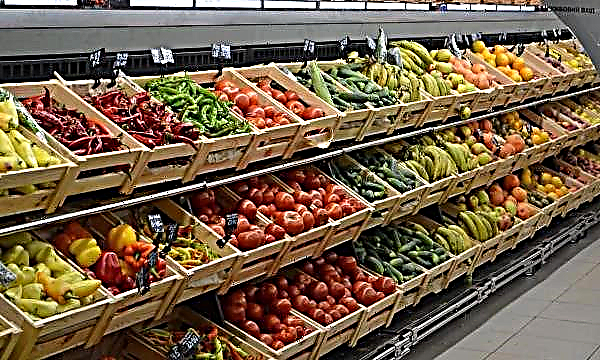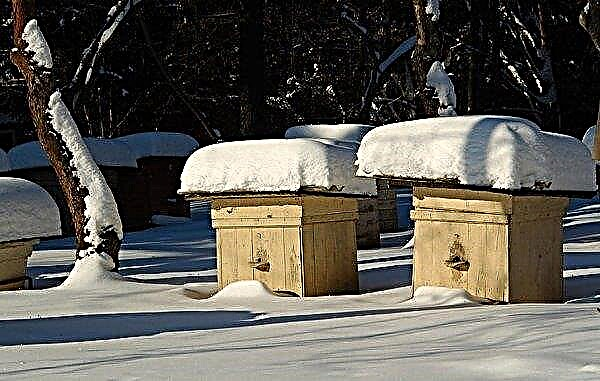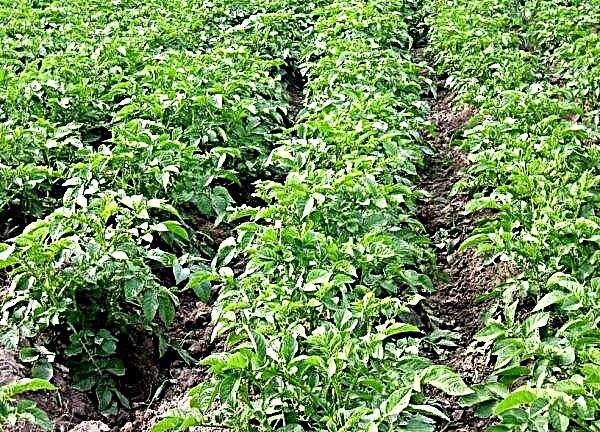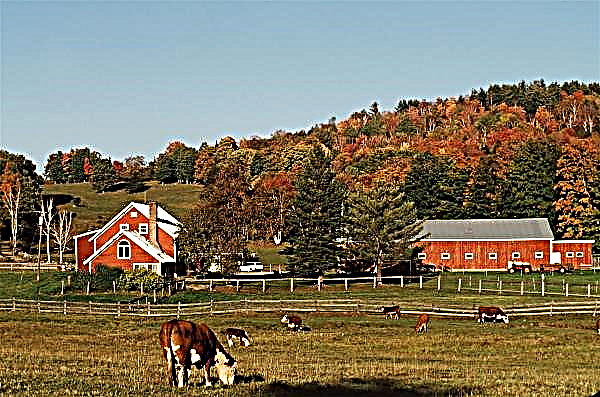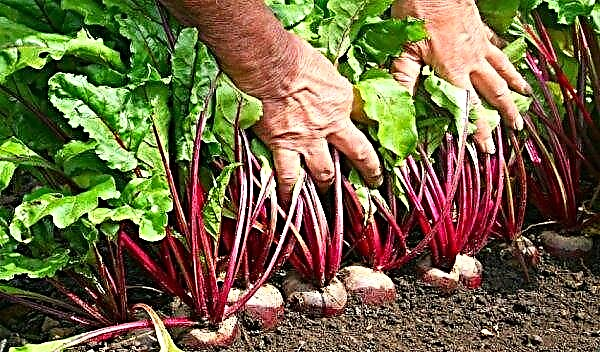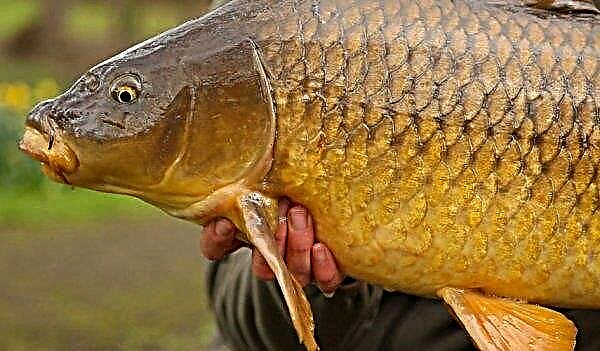Cucumbers are fastidious vegetables, especially to moisture. And in order to create comfortable conditions for them, it is necessary to follow the rules of irrigation. This will be discussed in the article.
The Importance of Proper Watering of Cucumbers
The importance of hydration is difficult to overestimate. Abundant hydration, as well as inadequate, negatively affect the development of culture and its fertility. With frequent and abundant irrigation, the soil is compacted, and oxygen deficiency occurs for the root system, which, together with a waterlogged environment, leads to the development of root rot. With insufficient watering, the aerial part develops drying and yellowing, leading to deformation of the fruits and the acquisition of bitterness. The key to a successful harvest is keeping the soil slightly moist.
The key to a successful harvest is keeping the soil slightly moist.
Did you know? Mankind has been eating cucumbers for more than four and a half thousand years - since the time of the Mesopotamian civilization.
What water to water cucumbers?
Proper care of cucumbers implies compliance with the requirements for temperature and quality of water for irrigation. Water should be warm (+20 ... + 25 ° C). Protected rain or well water heated in the sun is useful.
During periods of prolonged heat and lack of natural precipitation, at an air temperature on the earth’s surface of +28 ... + 30 ° С, processes in the root system in hot soil slow down and the plant withers, then to save the crop, water for irrigation should be cooler than recommended. Irrigation is done with a small amount of liquid under the root.
How often, and at what time of day is it better to water cucumbers?
The frequency of the procedure is determined by the place of cultivation, weather conditions and stages of development. How many times a week you need to water cucumbers, every day or less, and also what time of day it is better to do it: in the morning or in the evening - we will talk about this later.
Outdoor watering
After planting seedlings or seedlings of cucumbers in the soil, humidification is performed as the earth dries up, this happens approximately every 5 days, water is consumed - 8–9 liters per 1 m². This mode is maintained until the plants transition to the flowering phase. With the appearance of flowers on the bushes, the culture is irrigated once every seven days.
In the phase of the formation of ovaries and the active development of the fruit, watering is carried out every 2-3 days, while the water consumption is increased to 25 liters per 1 m². In hot, dry weather, to increase the humidity of the air, water containers can be arranged between the rows of bushes.
After heavy rain, the procedure is not carried out, you need to wait for the earth to dry.
Important! Beds with cucumbers (when grown in open ground) located near walls or fences will dry out before the rest.
By the end of summer, in August, the frequency of irrigation is reduced. This is due to cooling of the soil at night, and the worst evaporation of moisture, and excess moisture in the ground provokes the emergence of root rot.
Watering in a greenhouse
In greenhouse conditions, young cucumbers also need regular irrigation: as the land dries up, 4–5 liters of water per 1 m² of beds.
During flowering, the soil is moistened every 2-3 days. Then - in a day at the rate of 9-10 liters of water per 1 m². In the heat of the culture, additional hydration is necessary in the form of evening sprinkling, with a decrease in water consumption by 2-3 times. The best time of day for the procedure is earlier morning or evening time at sunset.
How to water cucumbers?
There are several methods of the procedure, consider them.
Watering "trickle"
It is usually carried out in open land. A watering can without a nozzle is used to disperse water. On the beds between the rows make small grooves with a depth of 5-8 cm. By tilting the watering can’s nose to the ground as much as possible, the recesses are filled with water, and as the moisture is absorbed, they fill up the soil and loosen it.
Sprinkling method
It is used for prolonged heat and exclusively in the evening, when the sun's rays do not fall on the culture. It is carried out from above on the plant by scattered jets of water or under the root. Water consumption - 4-5 l per 1 m².
In this way, the loss of moisture in the stems and leaves of the cucumber, which evaporated due to the same large leaves, is compensated. Also, artificial rain lowers the temperature of the flowers, thereby preventing them from falling off.
Important! With normal watering from a hose, without using a diffuser, the abundance of water that has fallen on the leaves of a cucumber will slow its growth, and can also provoke a defeat by powdery mildew — dangerous disease for the plant.
With this method, watering cans, sprinklers, hoses are used, but with a nozzle for dispersing water.
Drip irrigation
A common option - from a plastic bottle - the most economical variation of auto irrigation. The option is applicable for open ground, and for greenhouses.
Four methods of watering from a bottle are used.
- The first way. You will need a plastic bottle with a capacity of one and a half or two liters and a used rod from a ballpoint pen, in the future it will serve as a dropper. With the help of gasoline or solvent, the remaining ink is removed from the core, then one side of it is drowned out with a match or something similar. At a distance of 3 to 5 mm from the muffled edge, the rod is pierced with a needle, the diameter of the puncture should be half the diameter of the rod itself. Well close the neck of the bottle and cut the bottom, just above the beginning of the cylindrical part in the vessel make a hole into which the rod is inserted. Then the container is firmly inserted with a clogged neck into the ground near the bush. The top tank is filled with water, which then, slowly flowing through an empty rod, through the hole in it produces drip irrigation.
- The second way. In a plastic container, at a distance of 3-5 cm above its bottom, holes are made up to the tapering part. Holes are made in several rows, the number depends on the soil - the denser it is, the more holes should be. Also, if the ground is too wet - a container with a smaller number of holes is used, with the drying of the earth, the bottle is changed to another, with a large number of holes. The capacity is dug upside down between the bushes by 10–20 cm. The lid is removed from the neck.
- The third way. It is similar to the previous one, but the bottom is already cut, and holes are made in the upper part of the tank, closer to the neck. Screw the lid on and the container is buried with the neck down. To prevent the rapid evaporation of the water poured into the tank, the open top remaining outside is covered.
- The fourth way. Capacities are not placed in the ground, but suspended. Holes are made in the cap or slightly higher than the neck. Bottles are filled with water and suspended from previously placed supports. To avoid burns in sunny weather, containers are mounted as close to the surface of the earth as possible.
 If it is not possible to frequently visit the site, then it is better to use 5-liter bottles from under the water instead of 1.5–2 liter containers. This will significantly increase the period of autonomous irrigation.
If it is not possible to frequently visit the site, then it is better to use 5-liter bottles from under the water instead of 1.5–2 liter containers. This will significantly increase the period of autonomous irrigation.Features of irrigation combined with fertilizers
The combination of hydration and top dressing has a beneficial effect on the development of cucumbers and is necessary to obtain a good harvest. In the initial period of plant development, nitrogen is most intensively consumed, therefore, after 10–11 days, ammonium nitrate is introduced at the planting site.
During the fruiting period, potassium is consumed, which, in turn, requires the addition of potassium nitrate or superphosphate as a top dressing.
Did you know? Cucumber is the lowest calorie fruit — 100 g contains only 15 kcal.
Also, during watering in open soil, the introduction of organic matter is recommended - rotted chicken droppings or mullein. To compensate for the deficiency of trace elements in the soil, it is necessary to fertilize with bark.
Feeding is best done in the evening. Root feeding begins after the first pair of leaves unfolds. Next - every two weeks. The composition of the root dressing:
The composition of the root dressing:
- urea - 15 g;
- potassium sulfate - 20 g;
- superphosphate - 25 g;
- water - 10 l.
Another example of root dressing - cow manure (the amount is determined empirically) is poured with ten liters of water and insisted for about three days. Then add wood ash and superphosphate. On the eve of watering, the mixture is diluted with water in a ratio of 1: 6.
Did you know? You can find out that bitterness is likely in the future cucumber, and you should already take measures, you can still stage of formation of ovaries. To do this, just chew a piece of his sheet.
For foliar fertilizer, you can use the same compounds, but in a reduced concentration. In this case, valuable elements will not be absorbed by the root system, but absorbed by the leaves.
For a full vegetative cycle, four such recharge are recommended. If there are difficulties with the growth and development of the plant - the number of recharge can be increased.
When to stop watering?
The procedure is terminated if the ambient temperature drops below + 15 ° C - in such weather, the plant roots absorb moisture poorly, and this is fraught with decay of the plant.
You should also stop watering if during irrigation by the sprinkling method there are signs of culture damage by powdery mildew, anthracnose or spotting. With such diseases, drip irrigation is better.
Do I need to water cucumbers in cold weather?
Cucumbers need moisture not only in the heat, but also in moderate cold. In this case, there are features of the humidification procedure that must be taken into account:
- Watered only when there is no natural rainfall.
- The water temperature should be around + 55 ° C.
- Watering is carried out directly under the bush.
- Make sure that water does not fall on the leaves.
How to water cucumbers so that there is no bitterness?
If cucumbers are bitter, this is a sure sign of unfavorable conditions for their cultivation. The substance cucumber gives an unpleasant aftertaste to cucumber, which is the reaction of the plant to inappropriate cultivation conditions. There can be several reasons leading to bitterness, but the main ones are weather conditions and poor-quality watering. If the cucumbers start to be bitter, change the moisture pattern and add another watering.
There can be several reasons leading to bitterness, but the main ones are weather conditions and poor-quality watering. If the cucumbers start to be bitter, change the moisture pattern and add another watering.
The rules for watering cucumbers are simple and do not require special expenses. Their knowledge and observance is the key to an abundant and tasteful crop of this crop.




